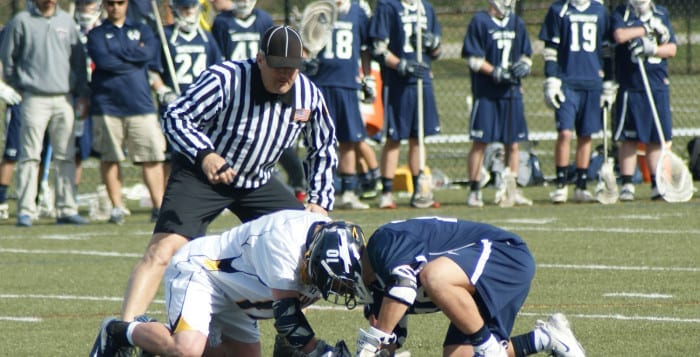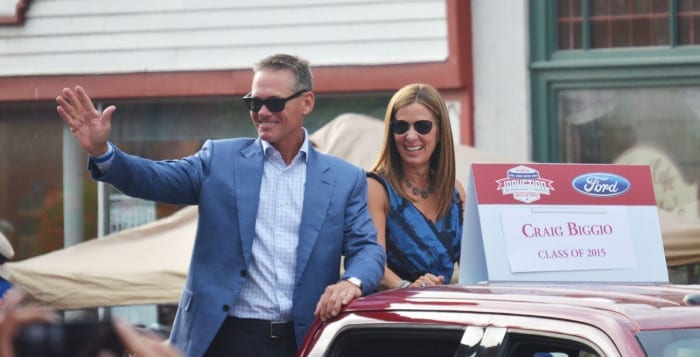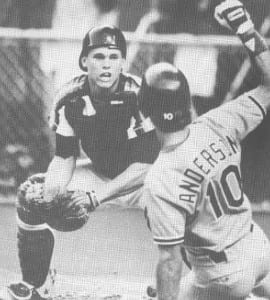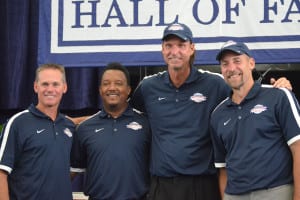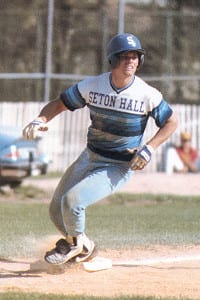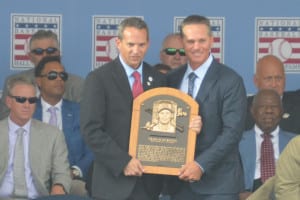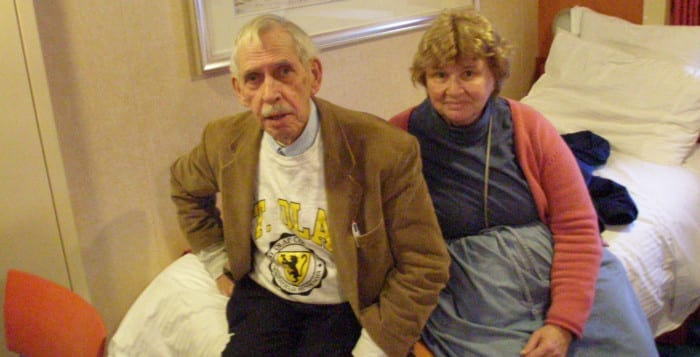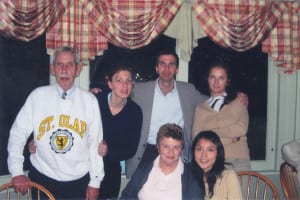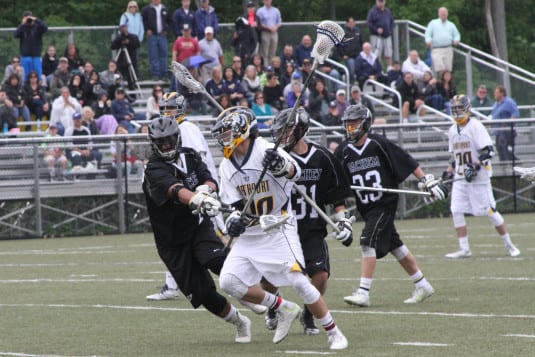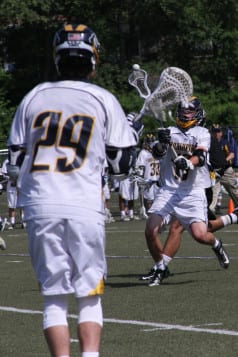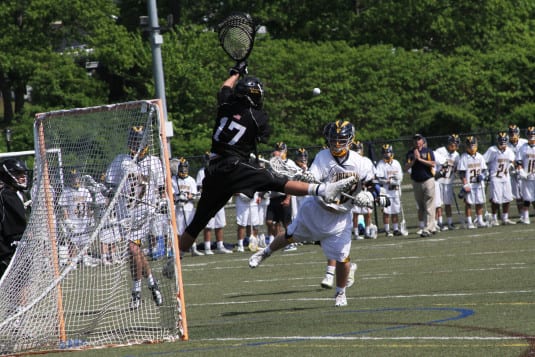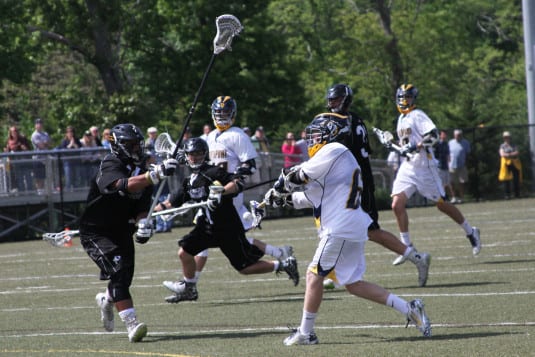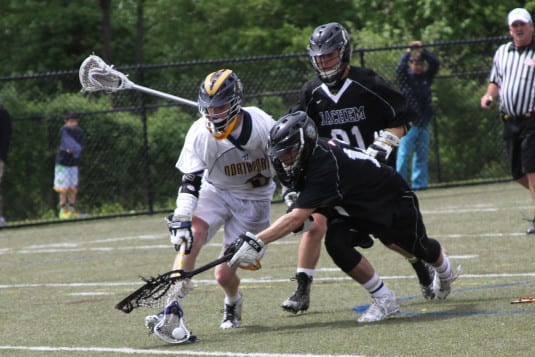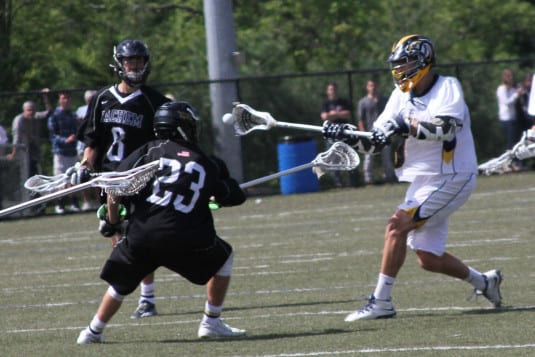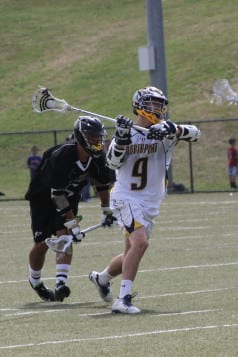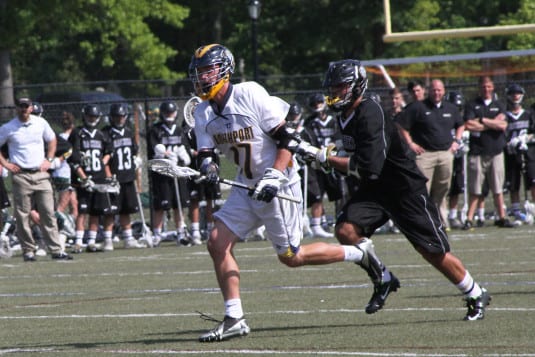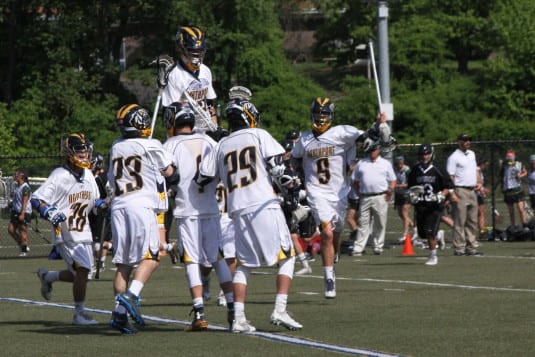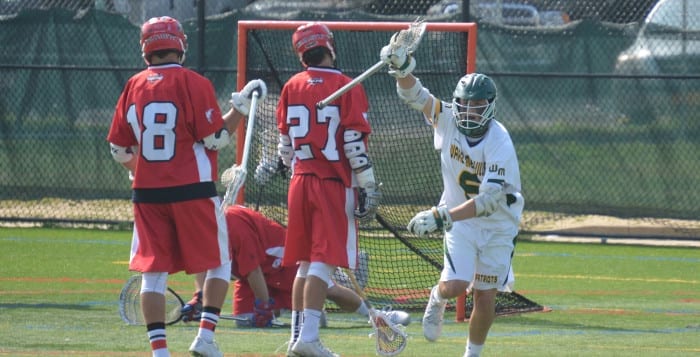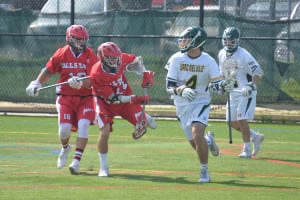One of Long Island’s top face-off specialists is headed to the University of Maryland this fall.
Austin Henningsen, a recent Northport grad, was stellar at his midfield position all four years of high school, winning 70 percent of his face-offs across that span, according to head coach George Searing.
Searing said the talent his now former player possesses is something he saw from a young age.
“We looked at him in seventh grade because I like to take a look at the young kids in our program,” Searing said, adding that coaches in the middle school told him how good a face-off player Henningsen was, that the summer after his eighth grade year he was asked to join the team for a competition. ”We were in a highly competitive summer tournament and I thought it would be a good experience for him to come with us and see what he was capable of. It was national tournament and he did really good.”
He did so well that other coaches even approached Searing after the tournament to ask questions about his soon-to-be new addition.
“A lot of the coaches asked me what school he was going to next year, and I had to tell them he was only in eighth grade,” he said, laughing. “I think that was a great experience for him and it really showed what capabilities he had.”
He made the varsity team his freshman year, and Searing said Henningsen worked tirelessly to continue to improve his skills, both with his team and with a private face-off specialist. As a result of his training and dedication to honing his skills, the Tigers star continued to rise to the occasion as the competition grew tougher each season.
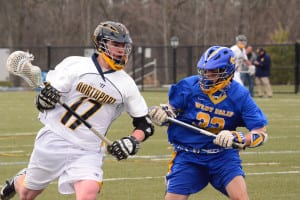
“He does a great job preparing for each lacrosse season and every year he got better,” the head coach said. “He’s an excellent leader for the kids, no matter what his skill level was, but then certainly, his on-field performance in terms of his desire to succeed and how he persevered from injury and continued to work hard just set the bar for everyone else on the team.”
In Henningsen’s first season with the Tigers, the team went 11-7 after falling to No. 1-seeded West Islip in the Suffolk County Class A quarterfinals. His sophomore year, the team took it a step further, and went 15-3 after losing to Smithtown West in the semifinals. The Tigers had a more difficult season in 2014, going 9-9, but made it back to the quarterfinal game, where the team lost to Smithtown East.
According to Searing, Henningsen’s junior year was his best in terms of statistics. The former player won 77 percent of his face-offs, scored 11 goals and three assists, and picked up 240 ground balls. But the head coach thought Henningsen was especially tremendous for the Tigers this past season, where the team made it back to the Class A semifinals, but fell to Ward Melville, 11-10, after going 17-1 up to that game.
“He was a very important player for us this past season,” Searing said of Henningsen, who won 75 percent of his face-offs and tacked on 14 goals and 10 assists while scooping up 184 ground balls. “I think the thing that he learned here at our program is how he has to commit himself and how hard he has to work. His work ethic is tremendous and that’s one of the reasons he is so successful when lacrosse season comes around.”
His commitment to the game earned him national recognition from high-level colleges and universities, but Henningsen ultimately chose to play lacrosse at the University of Maryland.
“I think the thing that really separates him from a lot of people is that he is very driven to succeed, but you wouldn’t know it from his demeanor when you see him off the field — he’s very low key, very humble,” Searing said. “He’s very well-prepared athletically and mentally to get into the season and he’s going to find it to be very challenging at the next level once he gets to college, but I think with the work ethic he acquired, it’s going to allow him to succeed at the next level.”
Maryland put together one of its best seasons in program history in 2015, when head coach John Tillman led the team to a Terrapin single-season record 15 victories and a berth in the NCAA national title game. The team featured the top-ranked scoring defense, and five players earned All-American honors.
Henningsen will be working under Tillman, who joined the program in 2010 after three years at Harvard University and 12 seasons as the top assistant at Navy. The university’s head coach captured his first Atlantic Coast Conference Coach of the Year honor by leading the Terrapins to the 2014 ACC regular season championship and the program’s third Final Four appearance in four seasons.
An All-American this year, just one out of nine in Suffolk County to receive the honor, Henningsen joins a strong Maryland program that his old coach is looking forward to seeing him succeed with.
“He’s been a tremendous player,” Searing said. “He’s been very coachable and a great role model for the younger guys. He’s exactly what you want to see in a student-athlete. I’m looking forward to watching him play once he gets to Maryland and am very confident he will be successful at the next level.”

